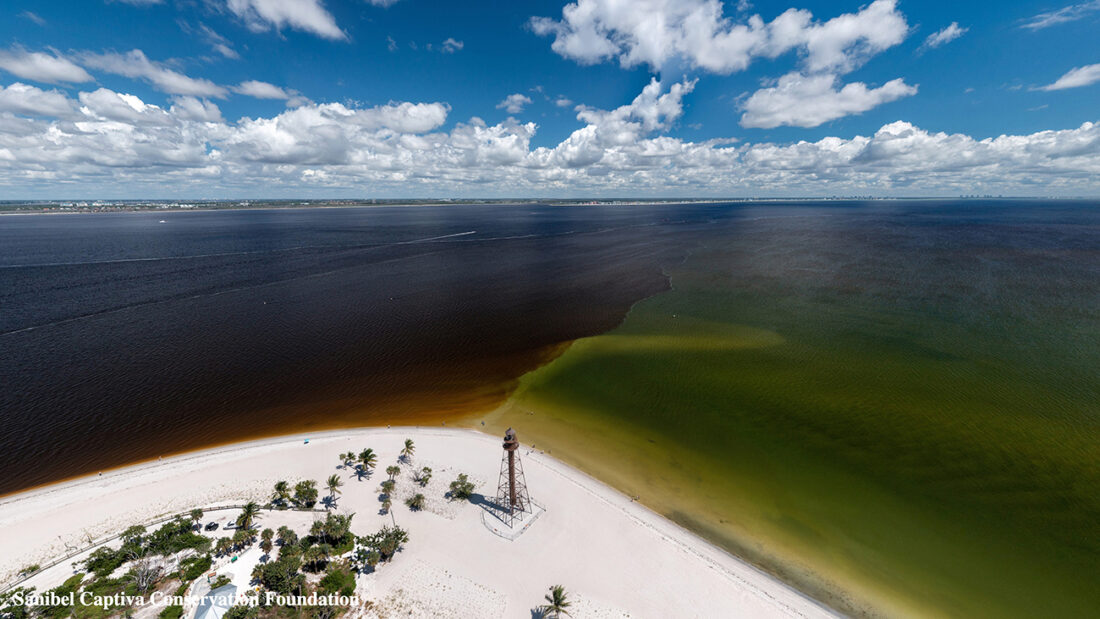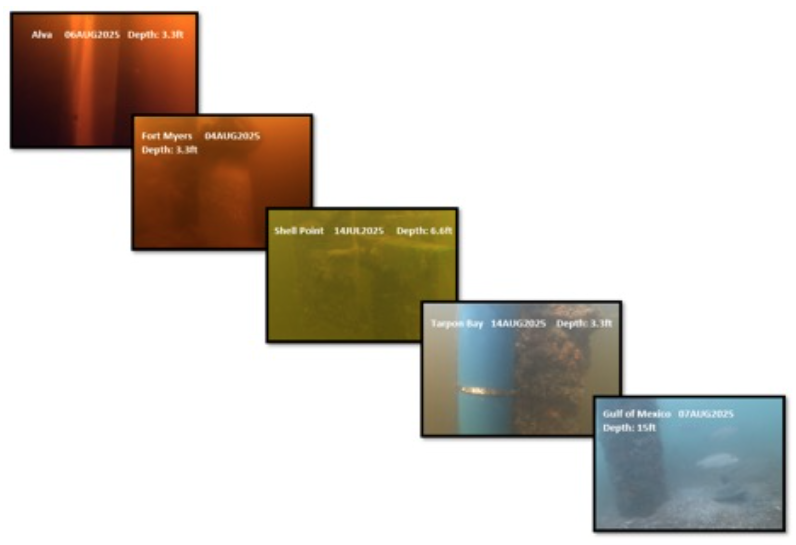What is Colored Dissolved Organic Matter?
Have you ever wondered why the Caloosahatchee is brown? Have you noticed during the rainy season that the waters around Sanibel have turned from a beautiful azure to a murky, less-than-desirable shade?
Colored Dissolved Organic Matter (CDOM) is one of the water quality parameters impacting water color that the Sanibel-Captiva Conservation Foundation’s (SCCF) Marine Laboratory monitors through its River, Estuary, and Coastal Observing Network (RECON). The RECON system currently consists of eight water quality monitoring stations throughout the Caloosahatchee River, and also in the estuary and Gulf.
WHAT EXACTLY IS CDOM?
CDOM is made up of bits of dissolved organic material that wash into the water from the land around it. It includes a complex mixture of natural and human-made chemicals — including polycyclic aromatic hydrocarbons, which are found in things like car exhaust and cigarette smoke — and it is often correlated with total nitrogen.
“The ebb and flow of the tide can extract CDOM from sediments, specifically mangroves. This runoff inevitably ends up in our local rivers and estuaries, bringing with it that unpleasant brown color,” Marine Lab research assistant Rachel Wynn said. “SCCF scientists liken it to brewing a cup of tea. You add tea bags, full of organic material, to steep in a cup of water. After a few minutes, the tannins from those tea bags have leached into your cup, the dissolved organic material now ‘staining’ the surrounding water.”
This process is most noticeable during the wet summer season, when the daily rain cells and storm events bring large quantities of stormwater to the clear waters around Sanibel.
“It’s almost as if the change occurs overnight,” she said. “Driving over the causeway one afternoon will feel like you’re driving in the Keys, and then with one significant downpour, the water will look like brewed tea.”
Damaging flows — greater than 2,600 cubic feet per second — from Lake Okeechobee can also contribute to high CDOM in the estuary and bays.
CDOM plays an important role in aquatic ecosystems by attenuating light in the UV and blue spectrums, supporting benthic species that may be sensitive to light in those ranges, such as delicate coral reefs.
However, too much CDOM can have a negative impact to those same deeper environments. Too much CDOM can block light to submerged aquatic vegetation, limiting photosynthesis and ultimately inhibiting the first level of the trophic food web.
“As a resident or visitor to Sanibel you can help mitigate the increased CDOM pressure to our waterways by limiting fertilizer use on your lawns and always picking up pet waste,” Wynn said.
To take a deeper dive into the world of CDOM, visit a 2010 paper published by the Marine Lab at https://aslopubs.onlinelibrary.wiley.com/doi/abs/10.4319/lo.2010.55.5.2037.
The SCCF has been monitoring CDOM in Southwest Florida since 2007.
OTHER FACTORS IMPACTING WATER CLARITY
Water color and clarity can also be impacted by turbidity, which can increase with high winds and tidal shifts that re-suspend sediments, as well as chlorophyll a — the most common pigment in phytoplankton (microscopic algae). Compared to turbidity and chlorophyll a, CDOM is the greatest contributor to decreased light availability.
WATER QUALITY RESOURCES
– RECON
– Weekly Water Conditions Tracker
https://sccf.org/what-we-do/water-quality/weekly-water-conditions-tracker/
– Caloosahatchee Conditions Report
https://sccf.org/what-we-do/water-quality/caloosahatchee-conditions-report/
– Aerial Water Quality Photos
https://aerialwq.sccf.org/lighthouse/virtualtour/
– Water Quality FAQ
https://sccf.org/what-we-do/water-quality/water-quality-faq/



